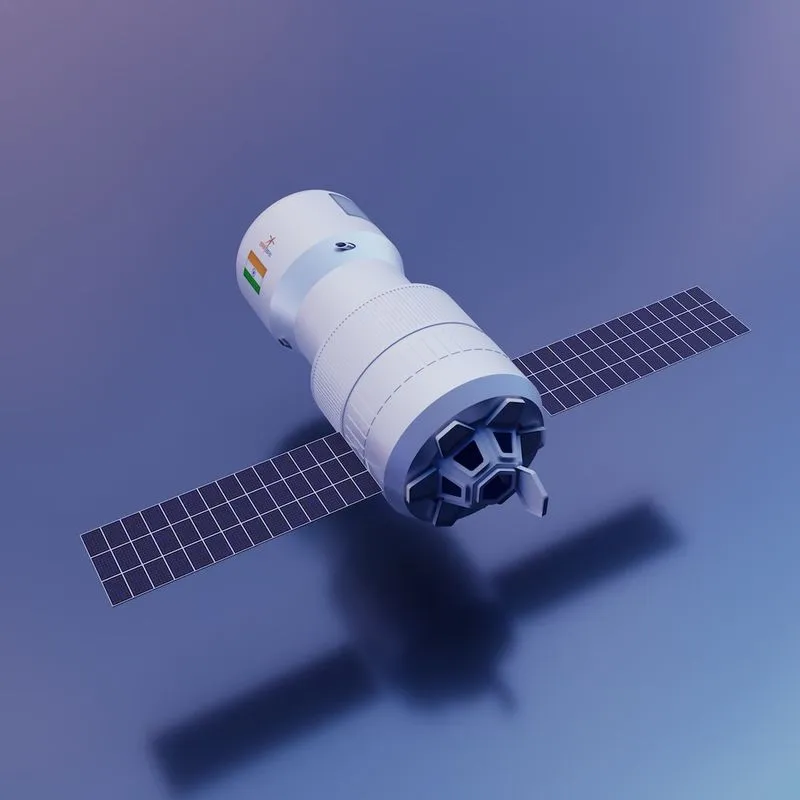
印度成功發射 Aditya-L1 太陽探測器,前往太陽
概述
印度成功發射了其首個基於太空的太陽觀測任務,Aditya-L1,僅十天前,該國的“月球南極號”探測器在月球南極登陸。Aditya-L1 重達 3264 磅,由南印度的斯裏哈裏科塔的薩提什·德瓦恩太空中心使用 44.4 米高的極地衛星運載火箭(PSLV-XL)於當地時間星期六上午 11:50 準時起飛。它將飛行 932,000 英裏,耗時 125 天(超過四個月)才能到達目的地:一個位於太陽和地球之間的五個拉格朗日點中的光暈軌道,該軌道允許太空船持續追蹤太陽活動,無需進行遮蔽和日食。
任務目的
印度的太空總署印度空間研究組織(ISRO)為 Aditya-L1 太陽探測器安裝了七個有效載荷,其中四個用於遙感,三個用於現場實驗。載具上的儀器包括可見發射線冕剖面儀、太陽紫外成像望遠鏡、X 射線分析儀、太陽風粒子分析儀、等離子分析儀和三軸高解析度數位磁力儀,這些儀器都具有收集必要資料和觀測的能力。此次代號為 PSLV-C57 的任務的整體目的是實時觀察太陽活動及其對太空天氣的影響。載具上的載荷將研究太陽的三個關鍵部分:光球、色球和日冕。此外用於進行現場實驗的三個儀器將觀察拉格朗日點 L1 的區域性環境。
背景
Aditya-L1 太陽探測器計劃於 2008 年提出,以研究太陽冕(太陽大氣的外層),並以印地語中的“Aditya”(太陽)命名。然而 ISRO 後來將該任務更名為 Aditya-L1,以擴大對太陽和太空環境的研究。過去,美國、歐洲和中國曾進行太空太陽觀測任務。然而這是印度首次涉足該領域,因為該國過去一直注重使用地面望遠鏡觀測太陽。一周前,印度太空總署令人矚目和讚譽的焦點是,其月球南極號成功在月球軟著陸。本週早些時候,ISRO 發布了一段由探測器共享的影片,顯示其月球車在月球表面移動,尋找安全路線。這次月球任務將幫助進行一系列實驗,以促成人類的登陸。除 Aditya-L1 外,ISRO 還長期致力於一項名為 Gaganyaan 的載人航天任務,計劃於 2025 年實施。與此同時太空機構還計劃發射一項無人任務前往金星。今年 6 月,印度成為 NASA“阿泰米斯協議”的簽署國,以與合作夥伴國進行聯合太空實驗。NASA 還承諾在休斯頓的約翰遜航天中心為印度宇航員提供培訓,並計劃明年將他們送往國際空間站。此外 ISRO 和 NASA 還在合作一項低地球觀測任務,計劃於 2024 年發射,以在 12 天內繪製整個星球的地圖並持續分析地球的生態系統、冰川質量、植被生物量、海平面和自然災害等。此外印度今年早些時候出臺了一項太空政策,以促進私人企業參與其太空任務。南亞國家已有 150 多家太空技術新創企業正在開發發射器、衛星和地球觀測解決方案。根據分析公司 Tracxn 最近公佈的資料,印度太空技術新創企業的融資額在 2022 年增長了 17%,從 2021 年的 9600 萬美元增加到 1.12 億美元。與去年相比,太空技術行業的資本注入額還大幅增加了 60%,增至 2023 年的 6200 萬美元。預計隨著外國直接投資的規範放寬,對印度新創企業的投資將進一步增長。敬請關注……
評論和建議
印度太空探索的崛起
印度空間研究組織(ISRO)最近的一系列成功任務表明,印度的太空探索能力正在取得實質性的突破。從成功登陸月球南極到發射太空觀測器前往太陽,ISRO 已經展示出其在太空科學和技術領域的實力。這些成就不僅對印度而言具有重大意義,還對全球太空探索領域產生了影響。
遠見與野心
印度對太空科學的投資和進一步發展顯示出其在該領域的遠見和野心。從月球任務到太陽觀測任務,ISRO 透過這些探索挑戰技術和科學介面的極限。此外印度還尋求與其他國家合作,例如與 NASA 簽署阿泰米斯協議,以進一步擴大其在國際太空探索領域的參與。這種國際合作將為印度提供更多學習機會和發展空間。
對科學和人類的影響
這些太空探索任務不僅對科學界具有重要意義,還對人類社會產生著深遠的影響。太陽觀測任務將為我們提供實時太陽活動和太空天氣的資料,這對於理解和預測我們的行星環境及其對地球的影響至關重要。此外這些探索任務也為科學家提供了進一步研究和發現的機會,有助於推動我們對宇宙的理解。
挑戰和未來展望
盡管 ISRO 在太空探索方面取得了重大突破,但仍然面臨著挑戰和未來的發展。太空科學是一個競爭激烈的領域,印度需要在科技和創新方面保持競爭力,以確保其領先地位。此外這些任務的成功還需要持續的資金和政府支援。然而隨著印度在太空科學和技術領域的崛起,我們可以樂觀地預期,這將為我們的社會和科學界帶來更多的創新和探索。
結論
印度在太空科學領域的成就
印度成功發射的 Aditya-L1 太陽探測器標誌著該國在太空科學和技術領域的成就。這次任務的成功將為我們提供更多的太陽活動資料和有關太空天氣的理解,這對我們的社會和科學界都具有重要意義。
國際合作的重要性
印度秉持著國際合作的理念,與 NASA 簽署了合作協議,並與其他國家積極參與太空科學領域。這種國際合作將為印度提供更多的學習和發展機會,同時也促進了全球太空科學的發展。
挑戰和潛在機遇
雖然印度在太空科學領域取得了重大突破,但仍然面臨著挑戰和未來的發展。然而隨著持續的資金和政府支援,我們可以期待印度在太空科學和技術領域的繼續創新和探索。
投資太空科技的未來
印度的太空技術新創企業正在蓬勃發展,為該國太空探索領域帶來了更多的創新和投資。預計隨著外國直接投資的規範放寬,對印度新創企業的投資將進一步增長,給予更多的機會和資源。
----
India’s Aditya-L1 太陽探測器成功升空,前往太陽
India successfully launched its first space-based solar observatory mission — just 10 days after the landing of its spacecraft Chandrayaan-3 on the lunar south pole. Called Aditya-L1, the spacecraft, weighing over 3,264 pounds, blasted off from the spaceport Satish Dhawan Space Centre in South India’s Sriharikota using the 44.4-meter tall polar satellite launch vehicle (PSLV-XL) at the targeted time of 11:50am local time on Saturday. It will cover a distance of 932,000 miles and spend 125 days (or over four months) to reach its destination: a halo orbit around one of five Lagrangian points, which lie between the sun and Earth and allows spacecraft to track solar activities continuously, without any occultation and eclipse.
India’s space agency, the Indian Space Research Organization (ISRO), has installed seven payloads on the Aditya-L1 spacecraft, four for remote sensing and three for on-site experiments. Onboard instruments include a visible emission line coronagraph, a solar ultraviolet imaging telescope, an X-ray spectrometer, a solar wind particle analyzer, plasma analyzer package and tri-axial high-resolution digital magnetometers, all equipped to collect the necessary data and observations. The overall purpose of the mission, codenamed PSLV-C57, is to observe solar activities and their effect on space weather in real time. The payloads on the spacecraft will study the three crucial parts of the sun : the photosphere, chromosphere and corona.
Aditya-L1, for which the Indian government allocated approximately $46 million in 2019, was conceptualized in 2008 to study the solar corona, the outer layer of the sun’s atmosphere, and was named Aditya (“sun” in Hindi). However, ISRO later renamed the mission Aditya-L1 to expand it to study solar and space environments. In the past, the U.S., Europe and China conducted solar observatory missions in space to study the sun. However, it is the first time India is venturing into this domain, as it has hitherto focused on sun observation using ground-based telescopes. The Indian space agency gained worldwide attention and praise last week when Chandrayaan-3 successfully made its soft landing on the moon.
Earlier this week, ISRO posted a video the mission’s lander shared showing its rover moving on the lunar surface to find a safe route. The lunar mission will help conduct a list of experiments to aid human landing eventually. Alongside Aditya-L1, ISRO has long been working on a human space flight mission Gaganyaan — planned for 2025 . Meanwhile, the space agency is also looking to launch an unmanned mission to Venus. In June, India became a signatory of NASA’s Artemis Accords to participate in joint space experiments with partner nations. NASA also committed to training Indian astronauts at the Johnson Space Center in Houston and intends to send them to the International Space Station next year. Additionally, ISRO and NASA are working on a low-Earth observatory mission, slated to launch in 2024, to map the entire planet in 12 days and consistently analyze Earth’s ecosystems, ice mass, vegetation biomass, sea level, and natural disasters and hazards.
Separately, India released a space policy earlier this year to boost private participation in its space missions. The South Asian nation already has over 150 space tech startups developing launch vehicles , satellites and Earth observatory solutions. Funding in Indian space tech startups grew 17% to $112 million in 2022 from $96 million in 2021. The space tech sector also saw a significant 60% increase in capital infusion from last year, reaching $62 million in 2023, according to the data recently released by analyst firm Tracxn. Investments in Indian startups are expected to grow further with the ease in the norms for foreign direct investments, which various stakeholders have long demanded.
延伸閱讀
- Apple Watch 在印度的出貨量激增,市場潛力無限!
- Meta 在印度擴張:即便裁員潮來襲,科技巨頭仍然看好市場潛力!
- Google 支援 Toonsutra,助力印度網路漫畫平臺蓬勃發展!
- 印度推出新域名以打擊數位詐騙:銀行安全再升級!
- 印度外賣巨頭 Zomato 即將改名為「永恆」!這一變革背後的故事你知道嗎?
- 印度新承諾資助創業企業十億美元!
- 印度讚揚中國 AI 實驗室 DeepSeek,計劃將其模型本地化伺服器託管!
- Accel 強化對 Sarla Aviation 印度電動空中計程車野心的支援
- 「Google 支援的 Pixxel 發射印度首個私有衛星星座!」
- 印度最大交易應用程式 Groww 即將上市,投資者熱情高漲!